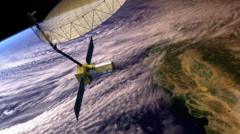Recent scientific advancements have brought humanity closer than ever to potentially discovering life beyond Earth. Among the most noteworthy developments is the detection of a gas on the exoplanet K2-18b, a biomarker that on Earth is produced by simple marine organisms. This revelation has highlighted the possibility of extraterrestrial life, a notion that many scientists, including Prof. Nikku Madhusudhan from Cambridge University, believe may soon be realized. "We may be on the verge of answering one of life's fundamental questions," he comments, sparking a renewed interest in the cosmos.
As our understanding of the universe grows, so does a suite of questions regarding how the existence of life on other worlds would transform human identity. The concept of extraterrestrial beings is not new; ancient civilizations fabricated tales of beings in the skies, culminating in speculative fiction during the 20th century. Nevertheless, recent findings provide empirical evidence from planets far outside our solar system, shifting the narrative from myths to scientific possibility.
NASA posits that with at least 100 billion planets in our galaxy, the search for extraterrestrial life has expanded its horizons beyond Mars, especially following the discovery of the first exoplanet orbiting another star in 1992. Currently, almost 6,000 exoplanets have been cataloged, many residing in a so-called "Goldilocks Zone," conducive for liquid water.
Instrumental innovations such as the James Webb Space Telescope (JWST) have significantly advanced our capabilities in scrutinizing exoplanets. JWST has made spectacular strides in detecting atmospheres and identifying biosignatures. However, challenges persist, especially with smaller planets obscured by stellar glare. Future telescopes, like NASA's Habitable Worlds Observatory planned for the 2030s, promise to broaden our observational horizons.
While immediate celebrations regarding the discovery of extraterrestrial life may not be prudent — skeptics caution that biosignatures could arise from non-biological processes — scientists are optimistic. Prof. Catherine Heymans from Edinburgh University points out that continued empirical research may gradually shift consensus towards the likely existence of life.
Future missions, including ESA's ExoMars rover, slated for launch in 2028, aim to explore potential microbial life beneath the Martian surface, and China's Tianwen-3 mission aspires to return samples from Mars by 2031. Daunting as these quests may be, they set the foundation for thorough examinations of our solar system's possibly habitable environments.
The definitions of life, its complexities, and the evolution of intelligent beings remain enigmas, nonetheless. Experts like Dr. Robert Massey articulate the delicate nature of emergence, signaling that even basic organisms can yield transformative implications for comprehension of universal life. The discovery of alien life could further diminish the human-centered narrative of existence, presenting a new paradigm wherein we reevaluate our cosmic significance.
Ultimately, as innovative technology enhances our capacity to detect life, experts contend that the implications will extend beyond the scientific domain, promoting a more united global perspective. Prof. Madhusudhan envisages a future where the awareness of life on other worlds reshapes humanity's collective identity, fostering collaboration across linguistic and geographical boundaries. It may initiate another chapter in human evolution, prompting introspection on our place within the grand tapestry of the universe.



















